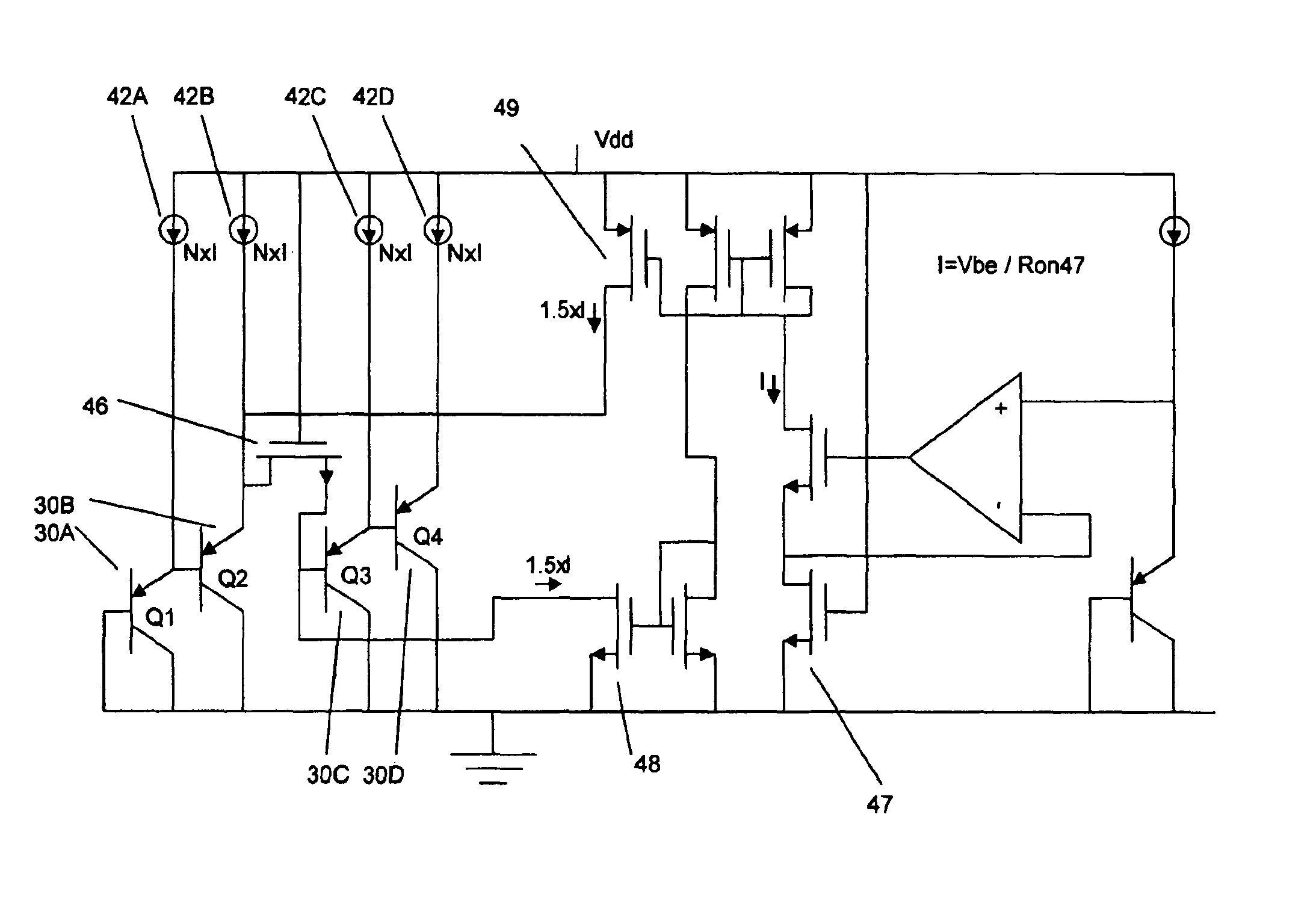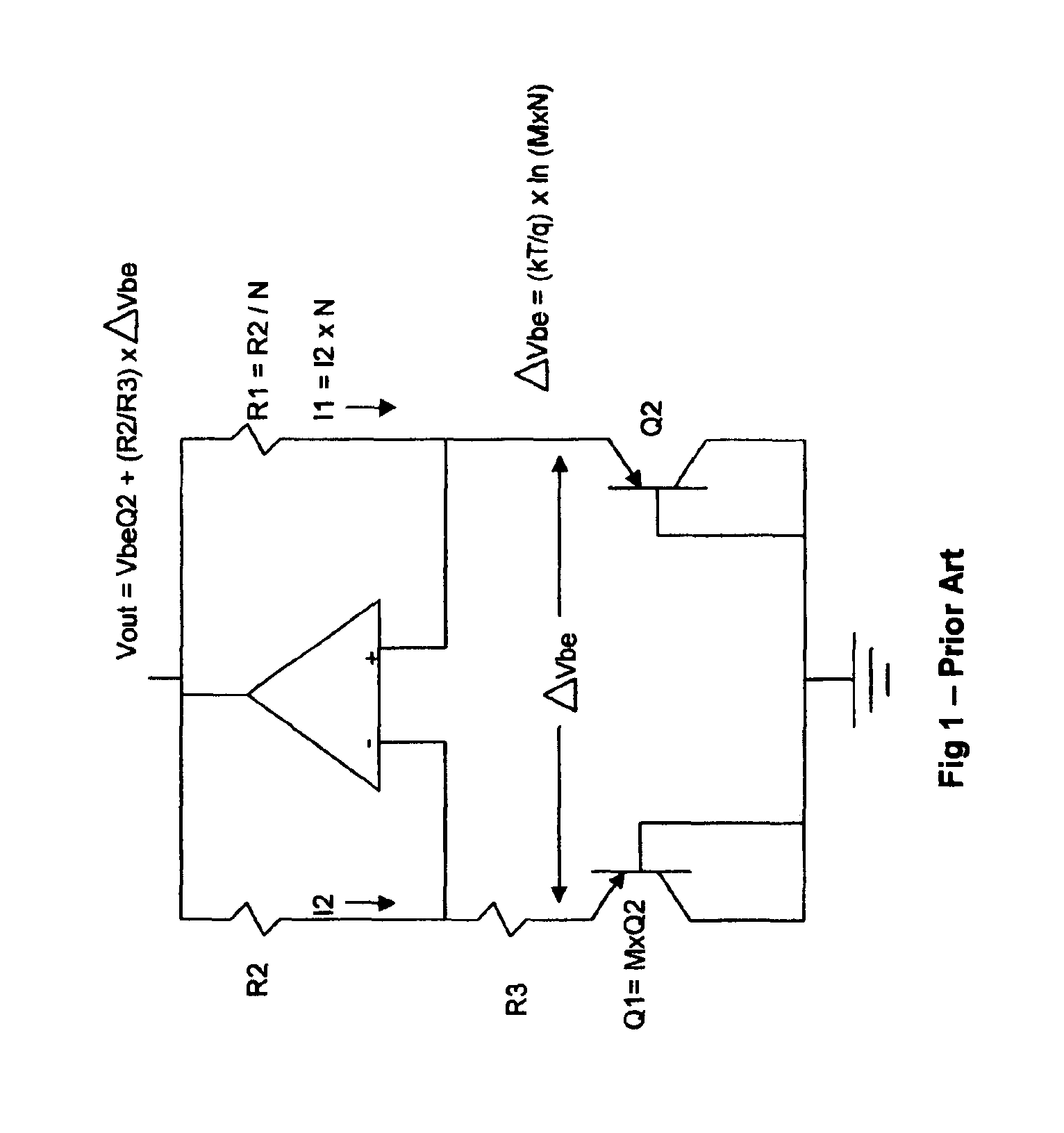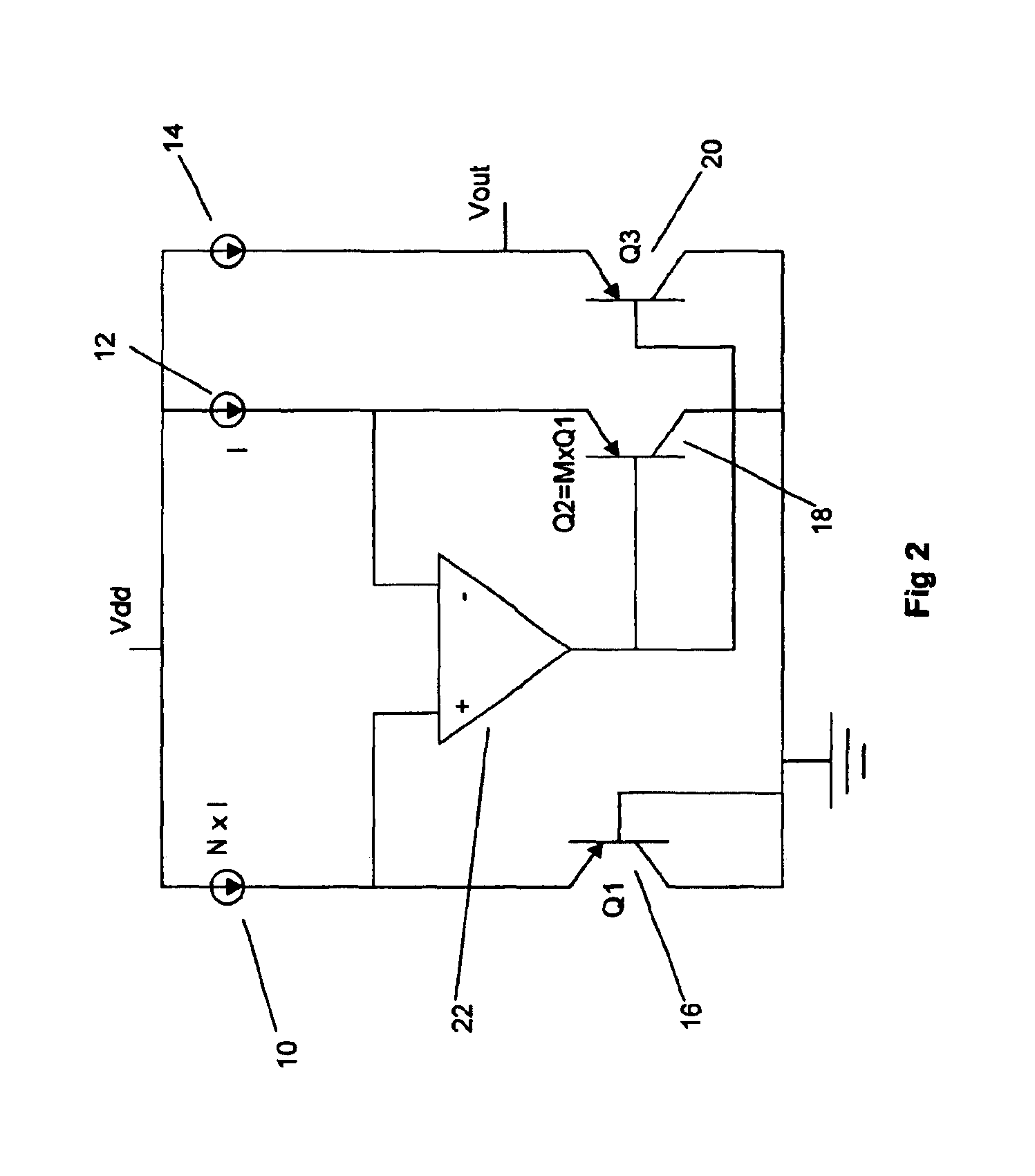Low noise resistorless band gap reference
a resistorless, low-noise technology, applied in the direction of electric variable regulation, process and machine control, instruments, etc., can solve the problems of increasing cost, increasing the cost of each differential amplifier, and requiring physically large switches, so as to achieve the effect of easy acquisition of low temperature coefficient current sources
- Summary
- Abstract
- Description
- Claims
- Application Information
AI Technical Summary
Benefits of technology
Problems solved by technology
Method used
Image
Examples
Embodiment Construction
The basic concept of the invention is shown in FIG. 2. A first current source 10 is N times bigger than a second current source 12. A first bipolar transistor Q116 and a second bipolar transistor Q218 are in a 1:M size ratio. The result is that the current density in the first bipolar transistor 16 will be N×M larger than in the second bipolar transistor 18. Those skilled in the art will immediately recognize that amplifier 22 forces the emitters of transistor 16 and transistor 18 to be at essentially equal potentials with respect to the base of transistor 16, shown here connected to ground. This forces the base of the transistor 18 to be approximately (kT / q)×ln(N×M) volts higher than the base of the transistor 16. Therefore, the output voltage will be the combination of this voltage added to the base-emitter voltage of a third bipolar transistor Q320 which is biased from a third current source 14.
Vout=Vbe(Q3)+(kT / q)×ln(N×M)
It is well known that the base-emitter voltage of transist...
PUM
 Login to View More
Login to View More Abstract
Description
Claims
Application Information
 Login to View More
Login to View More - R&D
- Intellectual Property
- Life Sciences
- Materials
- Tech Scout
- Unparalleled Data Quality
- Higher Quality Content
- 60% Fewer Hallucinations
Browse by: Latest US Patents, China's latest patents, Technical Efficacy Thesaurus, Application Domain, Technology Topic, Popular Technical Reports.
© 2025 PatSnap. All rights reserved.Legal|Privacy policy|Modern Slavery Act Transparency Statement|Sitemap|About US| Contact US: help@patsnap.com



